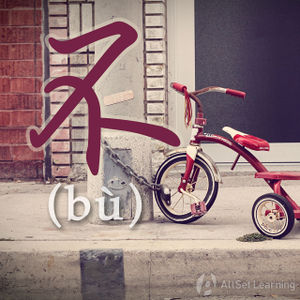Difference between revisions of "Comparing "bu" and "mei""
| Line 67: | Line 67: | ||
</ul> | </ul> | ||
</div> | </div> | ||
| + | |||
| + | ===Other examples=== | ||
== Dialog == | == Dialog == | ||
Revision as of 08:52, 13 November 2012
-
Level
-
Similar to
-
Used for
-
Keywords
| This article is a stub. Editors can help the Chinese Grammar Wiki by expanding it. |
都是否定副词,都可以用在动词前面,但是使用时间不一样。 Both 不(bù) and 没 (méi) can be placed in front of a verb or adverb to negate its meaning. 不 and 没 are some times interchangeable. However, there are times when you must use 不 as opposed to 没 and vice versa.
Contents
不
“不”一般是表达不想做的事情。 不 is generally used to express an action that you do not want to do.
Structure
Subject + 不 + V.
Examples
- 我 今天 晚上 不 吃 饭。
- 他 不 去 公园。
- 明天 我 不 在 家。
- 上周 我 不 和 我 的 朋友 在 一起。
没
“没”用于描述过去,说明动作没有发生。很多时候和“有”一起用,意思和用法不变。 没 is used to describe actions in the past or illustrate an action that hasn’t happened yet. Often times, 没 is used together with 有(yǒu) (the meaning and use do not change).
Structure
Subject + 没(有)+ V.
Examples
- 昨天 晚上 我 没 吃 饭。
- 他 没有 去 公园。
- 明天 我 没 在 家。
- 上周 我 没 和 我 的 朋友 在 一起。
Difference between 不 and 没
没有
You can use 没 to modify 有 to mean "do not have". You can only use 没 to convey this meaning. It is grammatically incorrect to use 不
- 我 没有 钱。
- 我 不有 钱。
Other examples
Dialog
- A: 你 吃 晚饭 了 吗?
- B: 没 吃。
- A: 为什么?
- B: 因为 不 想 吃。
See also
Sources and further reading
Books



